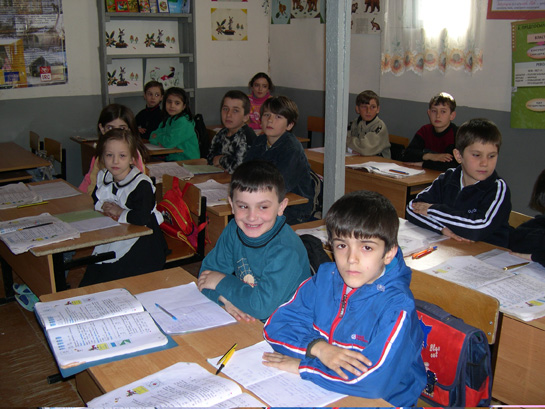"Ok enough already. I get it! Education for IDPs is a big deal. What should I do now?"
As my grandad used to say "there's more than one way to skin a cat."
Indeed there are lots of competing and complimentary voices about the need for education in emergencies. One of my faves include the More Than Me foundation which works in Liberia getting young girls off the streets and into schools. It's led by the inspiring and hyper-energetic Katie Meyler. More Than Me's terrific, uplifting videos, photos and an addictive social media feed supports their hard work in the field.
For the brainiacs and policy wonks, the Inter-Agency Network for Education in Emergencies, INEE is an indispensable resource. Run by Lori Heninger, its a global network (not another bureaucracy, whew!) that is focused on ensuring that IDPs and others benefit from their legally enshrined right to education in emergencies. It has more than 9000 members in over 170 countries, each with the commitment to ensuring safe, quality, relevant education for all persons in emergencies or fragile contexts.
In 2000, a group of dedicated people came together convinced that unless people in crisis, conflict and/or fragile situations were specifically lifted up and supported, that the Education for All goals would not be met.
INEE is a top notch resource and its members have created the INEE Minimum Standards for Education: Preparedness, Response, Recovery and other tools which are used broadly by donors, practitioners and others to ensure quality education is provided from the start of a crisis.
More recently, INEE members have been working on advocating and creating tools to help with the development of conflict sensitive education, these tools will be released on 8 April at a launch event at UNESCO in Paris. Its secretariat staff also write and disseminate informational messages on the status of education in situations such as the crisis in the Sahel and Syrian refugees in neighboring countries.
Here are some of INEE key messages:
Advocacy to promote and protect the right to education in emergencies is something one can engage in as an organisation or individual. The following are examples (as not all actions would be appropriate or safe in all situations.)
- Link up with other organisations/networks working on education
- Work directly with communities to inform people of their rights, facilitating human rights education
- Work with communities to develop an advocacy campaign
- Write news articles for local publications or the attention of national and international media
- Create a petition on a specific issue and collect signatures
- Meet with government officials, UN agencies and other international, regional and national decision makers
- Write letters to decision makers
- Challenge and test the justice system
- Assist and support human rights lawyers and organisations, to monitor and to document human rights violations
- Empower people to make rights-based budget reviews
- Act on government reports submitted to international treaty-monitoring bodies (e.g., CRC, CECSR, CEDAW, etc)
- Work with local communities to write ‘shadow’ reports when their country is submitting reports to international treaty monitoring bodies.
- Encourage UN Special Rapporteurs/Special Representatives to visit and report
Now read this article from Lori Heninger of INEE
Annie Cosalan is the Communications Specialist for IOM
